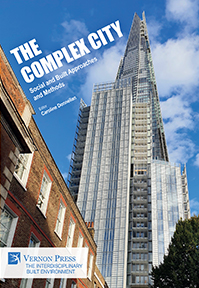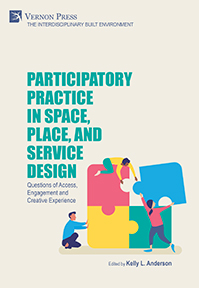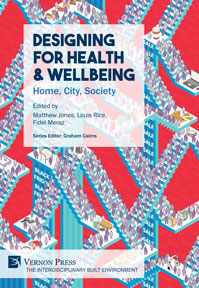Search
Browse
by Publication status
by Subject
Anthropology (26) Art (126) Business and Finance (27) Cognitive Science and Psychology (56) Communication and Journalism (49) Economics (63) Education (70) History (150) Human Geography (22) Interdisciplinary (43) Language and Linguistics (134) Law (16) Music Studies (19) Philosophy (161) Political Science and International Relations (104) Sociology (317) Statistics and Quantitative Methods (21)by Series
Series in Literary Studies (68) Series in Philosophy (59) Series in Education (54) Series in Sociology (45) Bridging Languages and Scholarship (33) Series in Politics (32) Series in World History (32) Series in Language and Linguistics (25) Cognitive Science and Psychology (21) Series in Philosophy of Religion (21) Series in American History (20) Series in Art (19) Critical Perspectives on Social Science (18) Series in Cinema and Culture (16) Series in Critical Media Studies (16) Curating and Interpreting Culture (15) Series on the History of Art (14) Economics (14) Series in Anthropology (13) Series in Business and Finance (13) Series in Music (12) Series in Communication (9) Series in Performing Arts (9) Philosophy of Personalism (8) Series in Law (8) Series on Climate Change and Society (8) Series in Economic Methodology (7) Women's Studies (7) Classics in Economics (6) Series in Economic Development (6) Philosophy of Forgiveness (5) Series in Built Environment (5) Series in Economic History (5) Series in Philosophy of Science (5) Series in Social Equality and Justice (5) Series on the History of Science (4) Serie En Estudios Literarios (3) Serie en Sociología (3) Series in Contemporary History (3) Series in Creative Writing Studies (3) Series in Design (3) The Interdisciplinary Built Environment (3) Serie en Comunicación y Medios (2) Serie en Historia (2) Serie en Música (2) Series in Heritage Studies (2) Series in Innovation Studies (2) Series in Philosophy of Race (2) Serie en Ciencias Políticas (1) Serie en Entorno Construido (1) Serie en Estudios Culturales (1) Serie en Filosofía (1) Serie en Filosofía de la Ciencia (1) Serie sobre Cambio Climático y Sociedad (1) Series in Classical Studies (1) Series in Economics of Technological Change (1) Series in Urban Studies (1)by Language
English Spanishby Author
Browsing with filters
Series Background
This series is developed in collaboration with series editor Graham Cairns and the research organisation AMPS (Architecture, Media, Politics, Society) https://amps-research.com/
The built environment is typically understood to involve all aspects of our cities - from the scale of individual buildings (architecture) to urban design and planning. The disciplines involved in the research, design and construction of the built environment are wide ranging. They include sociologists, human geographers, public health professionals, architects, planners, and urban designers, to mention just a few.
Sociologists study the life of communities in our cities, towns and neighbourhoods. Human geographers research issues ranging from into the migrations of people from rural to urban to the socio-political settings and the patterns of life and activity that characterise cities across the world. Public health professionals today continue the work of over two centuries in their field concerned with the city as an important site for public health debates. Examples in recent years include the Healthy Cities initiative developed by the World Health Organisation and multiple governmental and NHS projects to promote notions such as the ‘walkable city’, not to mention the health, community and social agenda promoted by the UN Habitat programme.
All of this research and activity of course happens alongside, and in collaboration with, those academics and professionals engaged in the built environment in more traditional ways. Architects form example have long engaged in designing buildings while working with social groups and communities on ‘community design’ projects and collaborating with the public to create more ‘human’ city environments. Urban planners obviously work with policy makers and architects directly, but are also now fully embedded in community participation exercises involving human geographers and sociologists. At an even larger regional planning level these issues are linked to government policy of community regeneration and a broader narrative on public health and healthy living that encourages active lifestyles and thus, walkable and bicycle friendly city streets.
The context for a cross disciplinary social, cultural and political analysis of the built environment across a book series is not only clear and deeply rooted, it is obviously needed and has a massive audience.
For more information on this series see here.
The Complex City: Social and Built Approaches and Methods
Edited by
Caroline Donnellan, Boston University; Global Programs, London, UK
Availability: In stock
226pp. ¦ $88 £73 €83
'The Complex City: Social and Built Approaches and Methods' explores different ways of understanding the city. The social city approach proceeds from the ground-up, it focuses on human interactions shaped by economic and environmental processes. The built city method looks through a top-down lens, examining policy and planning for buildings and infrastructure, including utilities and energy networks. This volume is different from other city anthologies in that it explores them through their differences, by presenting each chapter in one of the two categories. While there is invariably an overlap between the two areas, they are distinct positions. In doing so the book identifies how, despite their often adversarial approaches, they both belong to the same city. As essential components of the city they should not necessarily be resolved, as it is in this friction where creativity and innovation happens. 'The Complex City: Social and Built Approaches and Methods' is concerned about the ideas and solutions that they both offer. The book’s originality stems from this duality, and from its recognition that cities are living, organic, protean places of opportunity, crisis, conflict and challenge. The chapters demonstrate the complexity of cities as a set of ideas concerning what they engender, how they function and why they continue to act as a catalyst for different kinds of human activity. They explore issues of socio-political import and questions of the city as a physically constructed space. The themes are diverse and include the inception of the city as a place of competition to centres of regeneration and urban withdrawal. They cover a range of city and urban regions from Athens to Wellington from site specific singular perspectives to comparative assessments. The questions they raise include how do we inhabit urban areas, how do we make plans for them, and how do we, at times, ignore them entirely.
Participatory Practice in Space, Place, and Service Design
Questions of Access, Engagement and Creative Experience
Edited by
Kelly L. Anderson, Monash University
Availability: In stock
343pp. ¦ $93 £76 €86
'Participatory Practice in Space, Place, and Service Design' is premised on a belief in the importance of participatory practices in finding creative solutions to the plethora of problems we face today. It argues that engaging professions with the public in mutual exploration, analysis, and creative thinking is essential. It not only ensures better quality products, places, services, and a greater sense of civic agency but also facilitates fuller access to them and the life opportunities they can unleash. This book offers a uniquely varied perspective of the myriad ways in which participatory practices operate across disciplines and how they impact the worlds and communities we create and inhabit. This book suggests that participatory practices are multi-disciplinary and relevant in fields as diverse as design, architecture, education, health care, sustainability, and community activism, to name a few of those discussed here. How do designed objects and environments affect wellness, creativity, learning, and a sense of belonging? How do products and services affect everyday experience and attitudes towards issues such as sustainability? How does giving people a creative voice in their own education, services, and built environments open up their potential and strengthen identity and civic agency? Addressing these questions requires a rethinking of relations between people, objects, and environments; it demands attention to space, place, and services.
Designing for Health & Wellbeing: Home, City, Society
Edited by
Matthew Jones, Birmingham City University et al.
Availability: In stock
290pp. ¦ $63 £47 €54
Rapid urbanization represents major threats and challenges to personal and public health. The World Health Organisation identifies the ‘urban health threat’ as three-fold: infectious diseases, non-communicable diseases; and violence and injury from, amongst other things, road traffic. Within this tripartite structure of health issues in the built environment, there are multiple individual issues affecting both the developed and the developing worlds and the global north and south. Reflecting on a broad set of interrelated concerns about health and the design of the places we inhabit, this book seeks to better understand the interconnectedness and potential solutions to the problems associated with health and the built environment. Divided into three key themes: home, city, and society, each section presents a number of research chapters that explore global processes, transformative praxis and emergent trends in architecture, urban design and healthy city research. Drawing together practicing architects, academics, scholars, public health professional and activists from around the world to provide perspectives on design for health, this book includes emerging research on: healthy homes, walkable cities, design for ageing, dementia and the built environment, health equality and urban poverty, community health services, neighbourhood support and wellbeing, urban sanitation and communicable disease, the role of transport infrastructures and government policy, and the cost implications of ‘unhealthy’ cities etc. To that end, this book examines alternative and radical ways of practicing architecture and the re-imagining of the profession of architecture through a lens of human health.




